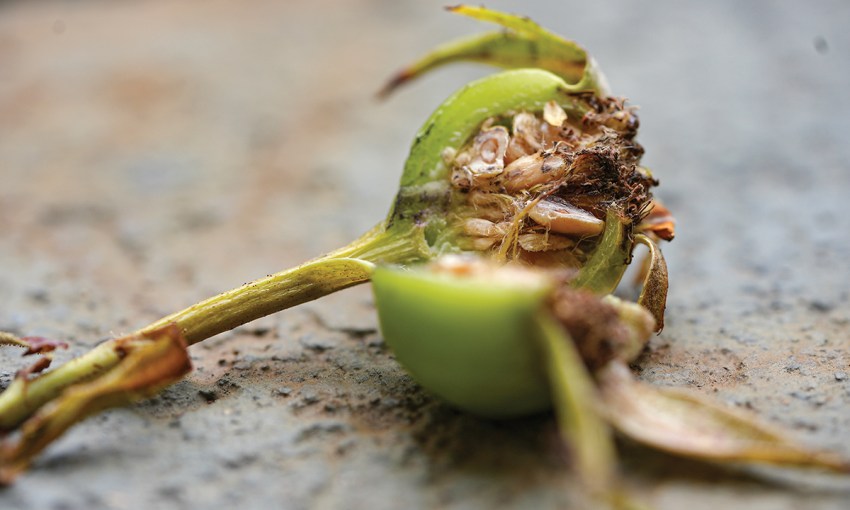Roses produce a kaleidoscope of colours and bouquets of alluring perfume, along with an amazing range of forms and styles, so it’s little wonder they also provide us with something we can sink our teeth into.
After the bloom has gone
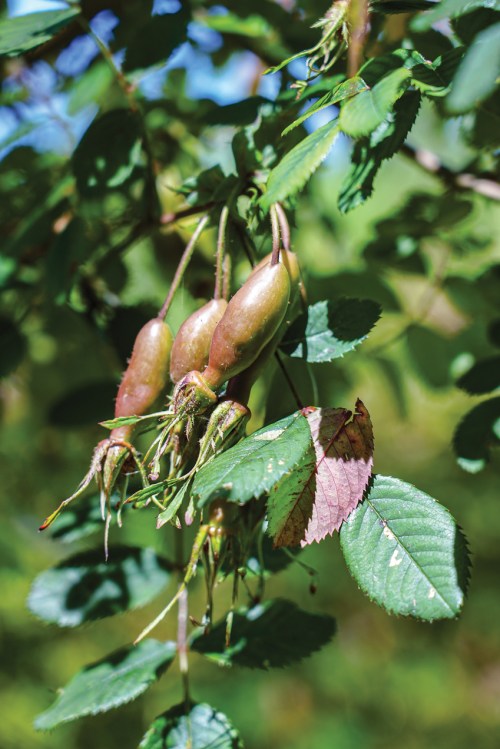
Long after the blooms have faded, many roses have another attractive attribute – their hips – the accessory fruit of various species. Edible and a fantastic source of nutrition, health and vitality, rose hips are a rich source of vitamin C, containing more of this essential vitamin than either oranges or lemons. Closely related to the apple, pear and strawberry, roses seem to have become the forgotten fruit of the garden.
These seed pods have played an important part in the diet of civilisations throughout history, having been found in Egyptian tombs dating back thousands of years. They have also been used for food and medicine by North American First Nations people, while long voyage sailors used them to ward off scurvy.
And the benefits of the humble rose hip don’t stop there: many herbalists recommend their use to help relieve symptoms of a wide range of ailments including colds, flu, indigestion, nervous disorders and exhaustion. Rose hip oil is highly valued in cosmetics and is credited with helping reduce scarring and skin burns.
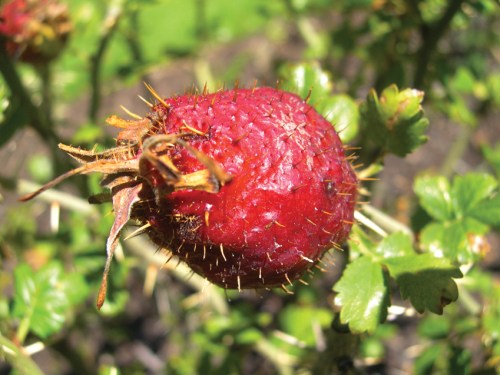
The decorative seed pods are a firm favourite with a floral industry always looking to create breathtaking bouquets or stunning sheaths; a few rose hip laden stems deftly incorporated into a bloom-filled arrangement certainly adds a “wow” factor.
Most roses grow hips. As flowers age, the vessel under the bloom, begins to swell and form into a mature pod. Serious hip production starts once autumn’s cooler nights arrive, signalling plants to prepare for the oncoming winter by slowing down their flowering, storing energy and developing seeds in the rose hips.
Cut a hip in half and you will see a mass of furry pips, these are rose seeds, and if handled correctly and with great skill, can grow into new rose plants.
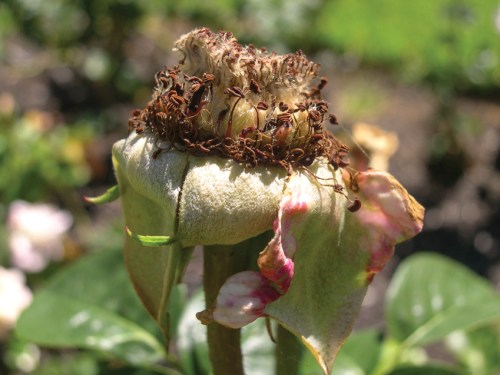
Many spring-only flowering species produce fantastic displays of wonderfully shaped and brilliantly coloured hips. The Mount Lofty Botanic Garden has a good selection of these elderly relatives of the modern rose, it’s well worth a trip to Mount Lofty from mid-autumn to enjoy these beauties.
Wander around the site’s Heritage Rose Garden and you will discover a myriad rose hip styles and shapes. Rosa sericea pteracantha’s small ferny foliage is dotted with small, bright red hips. Rosa sweginzowii produces a profusion of bright rose-pink hips over spring and early summer that turn into panicles of highly ornamental flagon-shaped fruit.
Some of the very best roses for producing large, bright hips are the Rugosa species, these include “scabrosa” and “rugosa alba”. This hardy group of roses is used extensively throughout Europe in both home gardens and roadsides alike. Their tough, leather-like foliage, colourful flowers and bright hips withstand harsh conditions and provide both interest and contrast in many landscapes.
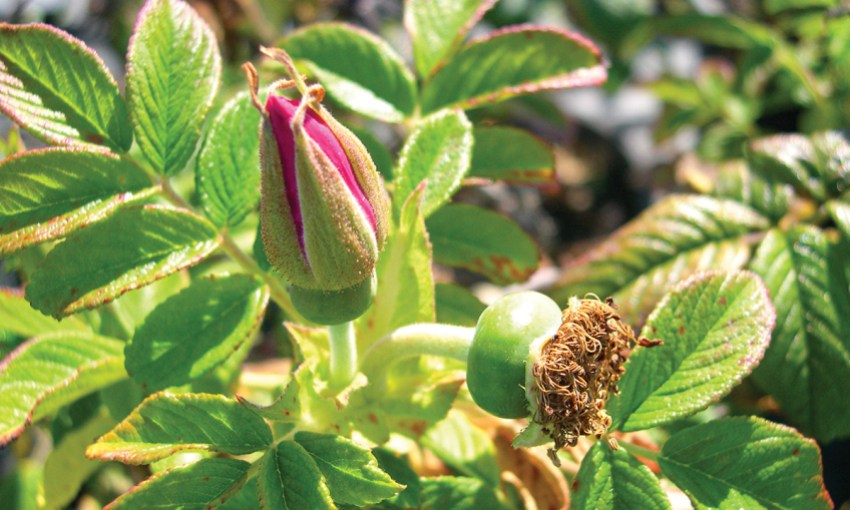
Once highly popular in Australia, Rugosa sales have been in steady decline, looked over by gardeners in favour of the more fancied modern roses. While they may be a little hard to locate, Rugosas are, without a doubt, well worth tracking down. You only need a couple of plants to keep up a near-continuous harvest of delicious fruit.
Many modern roses are also high on the hip parade, combining an attractive mix of prolific flowerings with a mass of decorative rose hips.
Bonica, a well-known shrub rose, has massed sprays of light-pink blooms over the growing season that sets into an amazing crop of seed pods early in the flowering season. This halo of flowers and hips extends into summer and autumn, turning into an attractive tangle of canes and colourful hips come winter.
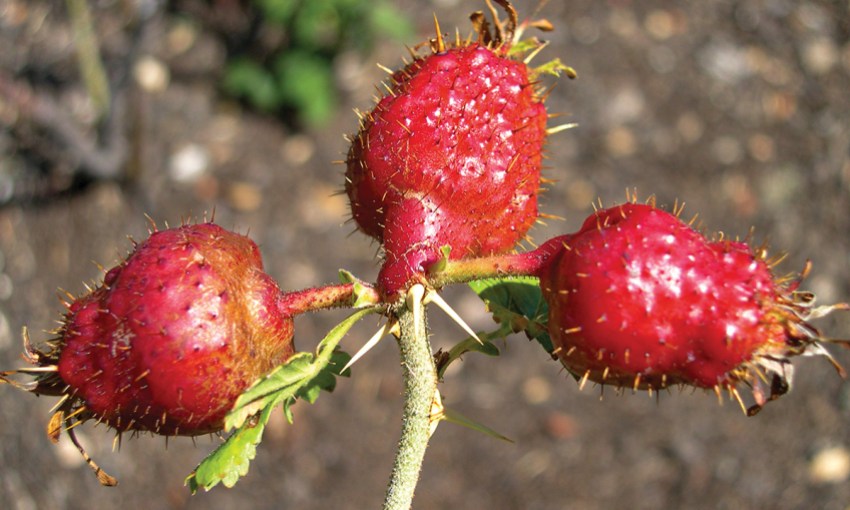
“Knock out”, an award-winning bush rose with cherry red flowers, produces masses of round seed pods from early autumn onwards. Garden favourites such as “Peace”, “Papa Meilland”, “Queen Elizabeth” and even “Iceberg” will also develop prominent hips.
Harvesting rose hips is not complicated. The fruit is ready to pick when the skin on the pods change colour, generally from green to orange or red, and the top (old flower stamens) looks dried and shrivelled. Snip off at the base of the pod and trim back any growth.
Cut each hip in half from the top downwards; avoid cutting crossways. Inside each half, you will find the centre filled with seeds and fine hairs. Carefully scrape it out, leaving the centre clean. Hairs can be irritating especially if eaten raw. You will find working with larger rose hips makes the job far less fiddly.

It is extremely important to pick hips from roses that have not been sprayed with systemic pesticides. These chemicals are absorbed by the plant and stored. If you are unsure, leave it on the bush.
Drying rose hips is very easy, whether by dehydrator, oven or drying rack. For oven-drying, turn to a low heat setting, place the cleaned hip halves on a tray and leave until they look withered, like a dried apricot. Allow to cool and store in an airtight container.
Recipes using rose hips are wide and varied, from teas and syrups to marmalades, jellies, soups and stews. Rose hip tea is an easy way to introduce yourself to the joys of the rose. All you need do is cut two to three hips, halve and clean them (removing all seeds and hairs), place in a cup and half fill with boiling water, allowing it to sit for 10 minutes. Top up with more hot water and drink. You may wish to sweeten if it is a little too tart.
Eat, dry or drink: rose hips add a bold new culinary experience to your daily menu.
This article first appeared in the Autumn 2023 issue of SALIFE Gardens & Outdoor Living magazine.



